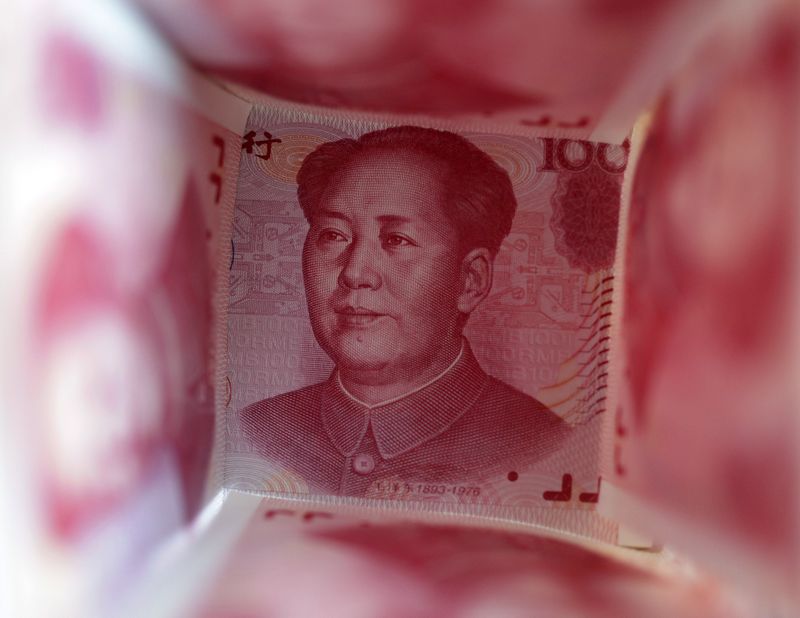
© Reuters. A 100 Yuan note is surrounded by other 100 Yuan notes in this picture illustration in Beijing March 22, 2011. China should allow its currency to rise more quickly in the near term to repel imported inflationary pressure from soaring oil prices, an officia
USD/CNY
-0.09%
Add to/Remove from Watchlist
Add to Watchlist
Add Position
Position added successfully to:
Please name your holdings portfolio
Type:
BUY
SELL
Date:
Amount:
Price
Point Value:
Leverage:
1:1
1:10
1:25
1:50
1:100
1:200
1:400
1:500
1:1000
Commission:
Create New Watchlist
Create
Create a new holdings portfolio
Add
Create
+ Add another position
Close
BEIJING (Reuters) – China’s bank lending likely pulled back sharply in February from an all-time high in January due to seasonal factors, a Reuters poll showed, even as the central bank seeks to spur sluggish economic growth and fight deflationary pressures.
Chinese banks are expected to have issued 1.50 trillion yuan ($208.52 billion) in net new yuan loans last month, down sharply from 4.92 trillion yuan in January, according to the median estimate in the survey of 21 economists.
A pull back in February’s lending is widely expected as banks tend to scale back lending after a rush to frontload loans at the beginning of the year to win market share.
The timing of the week-long Lunar New Year holiday, which fell in February this year versus late January in 2023, may also have weakened lending activity last month.
The expected new loan figure would be lower than 1.81 trillion yuan issued in the same month a year earlier.
“We expect a typical seasonal moderation in aggregate financing and loans, which could be magnified by the Lunar New Year falling in February,” analysts at ING said in a note.
“While there should be some support from lending activity to whitelisted property projects, this is unlikely to offset the seasonal effects.”
In January, China launched a “whitelist” mechanism, asking state banks to boost lending to property developers for certain approved residential projects so they can complete new home construction. High debt levels have forced many developers to delay or halt work on housing projects, weighing heavily on consumer confidence and broader economic activity.
China has set an economic growth target for 2024 of around 5%, which many analysts say is ambitious without much more stimulus.
Central bank governor Pan Gongsheng told a news conference this week that there is still room for cutting banks’ reserve ratio requirement (RRR), following a 50-basis point cut in January, which was the biggest in two years.
Pan also said maintaining price stability and promoting a moderate price recovery will be a key focus of monetary policy, amid signs of persistent deflationary pressures.
Last month, the central bank announced its biggest ever reduction in a key mortgage reference rate, in a bid to prop up the struggling property market and overall economy.
China has pledged that growth of total social financing and money supply will match expected goals on economic growth and inflation this year.
Outstanding yuan loans were expected to grow by 10.2% in February from a year earlier, down from 10.4% in January, the poll showed. Broad M2 money supply growth in February was seen at 8.8%, compared with 8.7% in January.
Any acceleration in government bond issuance could help boost total social financing (TSF), a broad measure of credit and liquidity. Outstanding TSF was 9.5% higher at the end-January than a year earlier, the same as that at end-December.
China has set the 2024 quota for local government special bond issuance at 3.9 trillion yuan, up from 3.8 trillion yuan last year. China also plans to issue 1 trillion yuan in special ultra-long term treasury bonds to support some key sectors.
In February, TSF is expected to plunge to 2.22 trillion yuan from 6.5 trillion yuan in January.
($1 = 7.1934 Chinese yuan renminbi)
Source: Investing.com


























